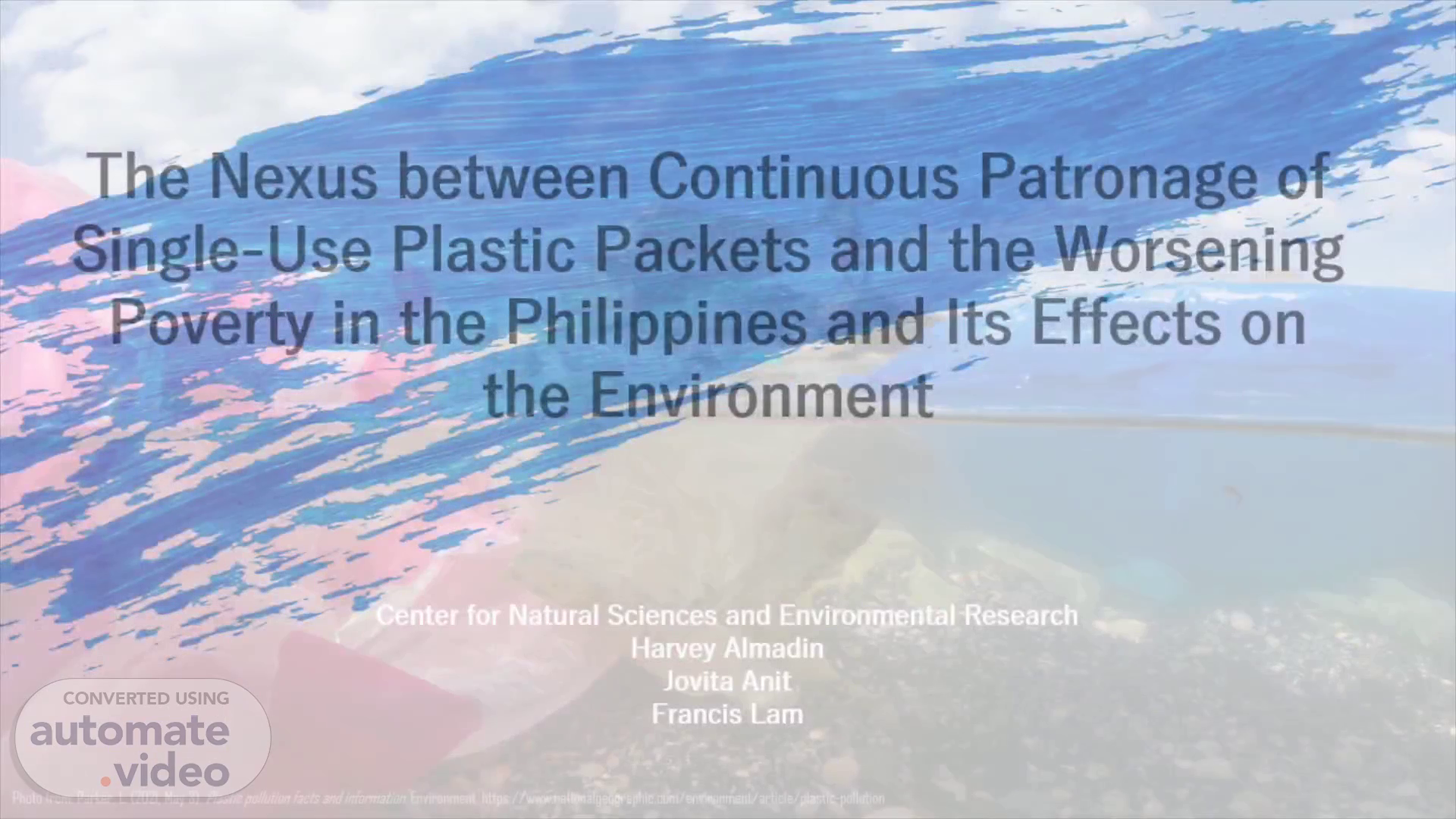
PowerPoint Presentation
Scene 1 (0s)
[Audio] The Nexus between Continuous Patronage of Single-Use Plastic Packets and the Worsening Poverty in the Philippines and Its Effects on the Environment Center for Natural Sciences and Environmental Research Harvey Almadin Jovita Anit Francis Lam.
Scene 2 (20s)
[Audio] Pollution is one of the major threats in the world and it doesn't just affect the environment, but it also endangers the health and well-being of the humans particularly one of the vulnerable sectors in the society – minimum wage earners and the homeless individuals..
Scene 3 (38s)
[Audio] One of the main contributors of pollution in low and middle-income countries are plastics. Single-use plastics like sachets are patronized by the general population, not just due to practicality, but because that's all they can afford with their income. Most of these single-use plastics are not disposed of properly, and thrown anywhere, resulting in clogging of sewers or polluting bodies of water..
Scene 4 (1m 4s)
[Audio] OBJECTIVES OF THE STUDY To determine if there is a correlation between poverty and plastic pollution in the Philippines To determine the driving factors of the Filipino households in their decision to purchase items on single-use plastic packaging To determine what measures can be done to mitigate the plastic crisis in the Philippines.
Scene 5 (1m 28s)
[Audio] SIGNIFICANCE OF THE STUDY This study will be able to determine what the driving factors of Filipino households are in their continuous patronage of single-use plastic packets and how we can mitigate them and find alternatives that are sustainable and feasible..
Scene 6 (1m 44s)
[Audio] SCOPE AND DELIMITATION This study will only focus on the continuous use of goods with single-use plastics as packaging in the Philippine setting; Factors affecting the decisions of Filipino households in their purchase of such goods will be discussed by using social theories and models and secondary data from other studies conducted in relation with the theme. Only plastic crises causing pollution as a result of poverty will be tackled in this research. Other environmental impacts of poverty in the Philippine setting will not be included in this study..
Scene 7 (2m 21s)
[Audio] MATERIALS AND METHODS This study will be based on secondary data from different studies already conducted that focuses on the growing plastic crisis in the Philippines and how poverty and plastic crisis are interconnected in this problem. Mitigation measures for the plastic crisis will also be included in this study..
Scene 8 (2m 42s)
[Audio] Human-Environment Interaction Models: Political Ecology Model may be applicable to this research since power (purchasing power) of individuals heavily rely on their capacity (income). Having more power means you have the option to choose environment-friendly products; whilst having less power would mean resorting to choosing what is affordable and practical to you. Same goes with the actor/actress-based model of Human ecology, the driving force of an individual would be on how they would be able to maximize and utilize what they have, which is in this proposed study, how are they going to survive when their choices are limited due to their financial capabilities..
Scene 9 (3m 25s)
[Audio] In this concept map, we can see how poverty affects low-income generating households and the environment, and how these pose threats to the environment, resulting heath hazards to the vulnerable sectors and this also shows how the government is all connected in this cycle..